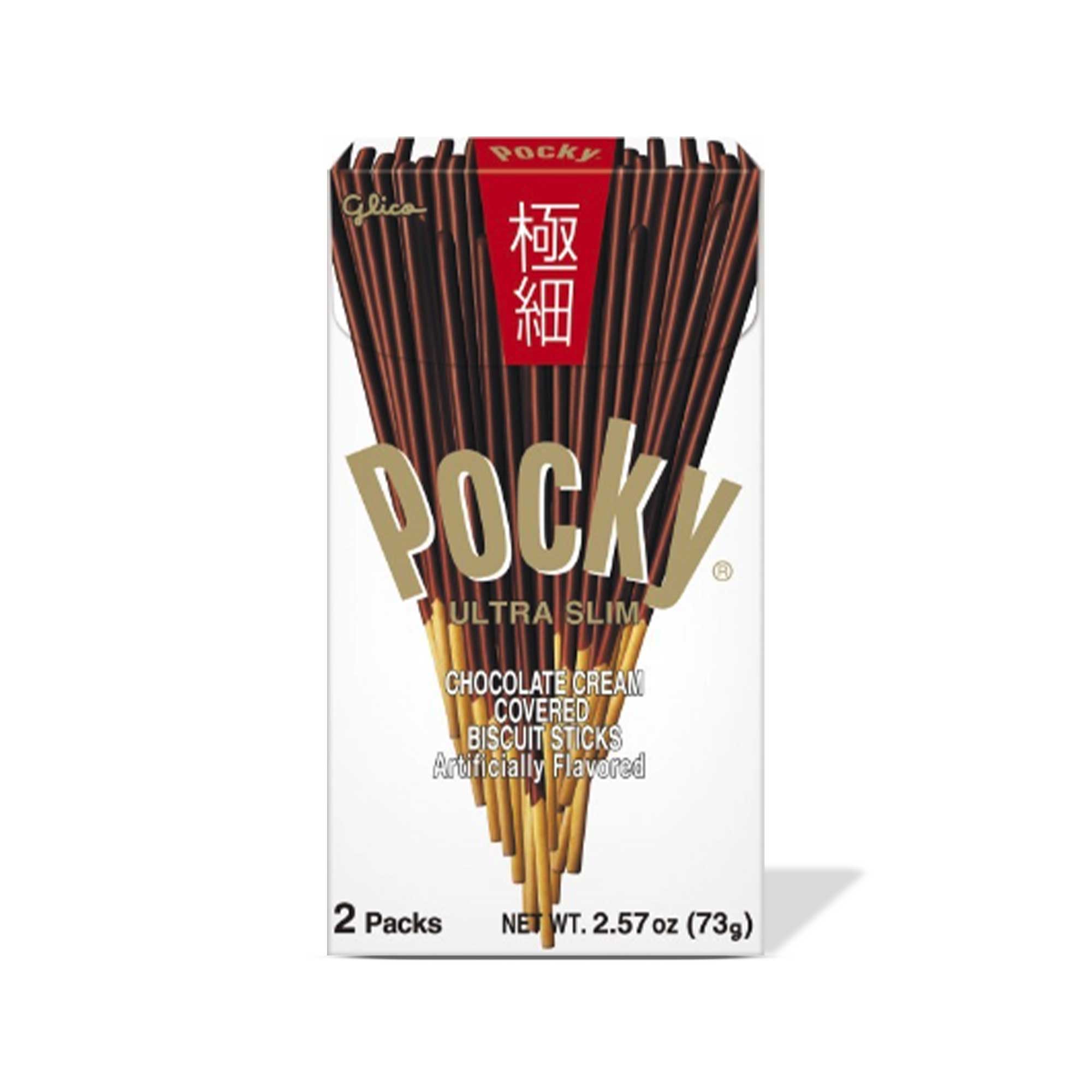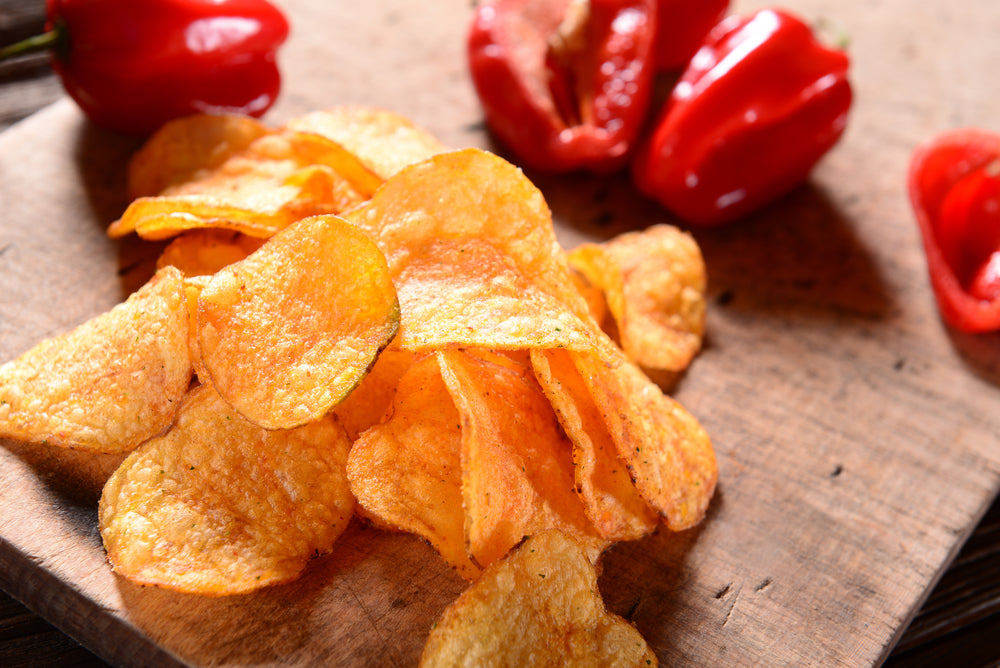From Dashi to Miso: The Ultimate Guide to Japanese Ingredients
Most people who are new to Japanese cooking feel overwhelmed by the wide variety of ingredients used in traditional dishes. But the fact is that it’s easier than you think. All you need are a few basic ingredients in your kitchen, and you can cook sumptuous traditional and modern Japanese dishes. That’s where we come in.
We’ve created this ultimate guide to help you shop for staple ingredients that serve as the foundation of authentic Japanese cooking. These Japanese ingredients play an essential role in traditional and modern cuisine. They combine to create the five basic tastes that characterize Japanese cuisine: umami, sweetness, bitterness, sourness, and saltiness. They also uphold the culinary principles of simplicity, grace, and precision. Join us as we take a deep dive into the staples of Japanese cooking!
Dashi: The Umami-Rich Backbone of Japanese Cuisine

Dashi is a soup stock commonly used in Japanese dishes. The stock is the main source of umami (savory taste) in a large portion of the cuisine and has been around since the Edo period of 17th-century Japan. Dashi is super simple compared to soup stocks from other countries. It does not contain an assortment of vegetables, spices, and meats but instead typically includes only an ingredient or two, which could be katsuobushi (bonito flakes), kombu (edible kelp), shiitake mushrooms, or niboshi (dried anchovies). Katsuobushi plus kombu is the most common combination, but you can find dashi that combines all four ingredients.
Dashi is rich in natural glutamate, which produces a slightly sweet and savory umami taste that adds depth to dishes. It’s used as a soup stock for miso soup and a broth base for Japanese hot pots, stews, and noodles. Dashi also serves as a seasoning liquid for street snacks and Asian sauces. There are at least 6 different variations of dashi:
-
Awase dashi: classic version that combines katsuobushi and kombu.
-
Katsuo dashi: seafood-based version made from katsuobushi.
-
Iriko dashi: another seafood-based version made from niboshi.
-
Kombu dashi: vegan or vegetarian version made from kombu.
-
Shiitake dashi: vegan or vegetarian version made from shiitake mushrooms.
-
Vegan dashi: another vegan or vegetarian version that combines kombu and shiitake mushrooms.
Dashi can add umami richness and depth to practically any traditional or modern dish, either as a soup stock or liquid seasoning. To learn more about dashi and its preparation method, read our guide on how to make dashi at home.
Mirin: The Sweet Sake for Cooking

The famous Japanese sweet rice wine, mirin, is responsible for adding depth and sweetness to a variety of traditional dishes. This rice-based condiment offers mild flavors of sweetness and acidity through marinades, glazes, and sauces. The delicious and syrupy mirin is one of the most popular liquid seasoning and glazing agents in Japan and other Asian countries. Mirin is quite similar to sake, another Japanese rice wine, but has a lower alcoholic content - mirin’s is 14%, while sake’s is around 18%. Like sake, mirin’s sweetness comes from the fermentation of rice.
In Japanese cuisine, mirin often serves to tenderize and sweeten various ingredients used in cooking. Sometimes, people combine it with sake and soy sauce to make a marinade for meat and seafood that masks their smell and keeps them from disintegrating. Mirin is a vital ingredient in the making of teriyaki sauce and kabayaki sauce. The condiment has 4 distinct types, which we’ll explore in the rest of this section:
-
Hon mirin: the “true” mirin and a combination of glutinous rice, shochu, and rice koji. It has 14% alcohol content.
-
Mirin: a combination of glutinous rice, rice koji, and sake. It’s identical to hon mirin, but uses sake instead of shochu.
-
Aji mirin: mirin-style condiment that supposedly “tastes like mirin” but contains non-traditional ingredients like starch, pre-processed alcohol, and glucose syrup. Its alcohol and salt content are about 8–14% and 2%, respectively.
-
Mirin-like condiment: non-alcoholic condiment made with starch syrup, brewed vinegar, and other components.
Sake: The Versatile Japanese Rice Wine

Sake is a traditional Japanese rice wine that's both a beloved beverage and a key ingredient in Japanese cooking. The kind of sake sold as an alcoholic beverage contains 18–20% alcohol and no salt, while cooking sake is diluted and contains 2-3% salt, making it unfit for direct drinking. The making of sake is a brewing process similar to that of beer. It contains rice, yeast, koji (Aspergillus oryzae), and water. Sake can taste hearty or full of umami, but it can also be light and slightly acidic or tangy and fruity, depending on the ingredients used. Sake is a huge part of Japanese culture, as it is commonly served at festivals, rituals, and celebrations. Cooking sake is used as a marinade for fish and meat and as an ingredient for adding umami to dishes such as nikujaga (meat and potato stew) and grilled chicken.
The grade of sake depends on the quality of the rice used to make it. A more thorough rice milling process will produce cleaner, lighter, and more fragrant grains. The quantity of grain remaining in the rice after milling serves as the basis for grading. Futsushu is a low-quality sake graded over 70%, which means that only less than 30% of the grains were removed. Honjozo is another low-grade sake with a rating of 70% to 61% (30% to 40% of grains removed). High-grade or premium sake starts with ginjo at 60% to 51% (40% to 50% of grains removed). The sake with the highest grade is daiginjo and it has a grade of 50% or less. Most people consider any sake below 70% (honjozo, ginjo, and daiginjo) to be premium sake, and they’re collectively referred to as tokutei meishousu, or “special designation sake.” Most sake manufacturers include the grade on their bottle labels. They may also include terms that classify sake based on its production methods. Check out some of the terms below:
-
Junmai: sake without any alcohol.
-
Genshu: undiluted sake with high alcohol content.
-
Tokubetsu: special sake made using premium rice or other quality production processes.
-
Koshu: aged sake that has been in the tank or bottle for about three to five years or longer.
-
Happo shu: champagne-like, sparkling, and carbonated sake.
Miso: More Than Just Soup
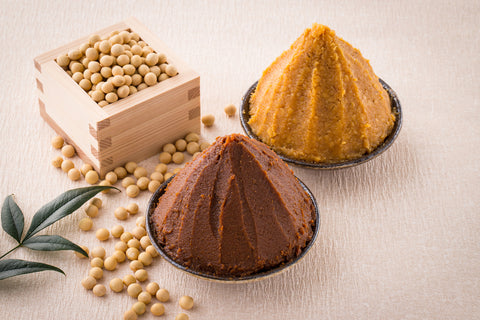
The best way to describe miso is as a fermented soybean paste. It’s made by combining soybeans, koji, and salt in a container, then allowing them to age for several months or years. Miso is typically used to bring umami-rich and savory flavors to soups, noodles, and fried foods. You may have heard of miso soup, which is the most common dish made with miso seasoning. The fermentation process used to make miso involves a mold spore called koji, which grows on grains such as rice and barley. Protein enzymes released by koji are responsible for breaking down soybeans during the fermentation period of miso production. As a result, the type of grain in which the koji grows can be used to classify miso. Rice koji creates kome miso, barley koji creates mugi miso, and soybean koji creates mame miso.
Other ways to classify miso include color, ingredient proportions, and preparation methods, leading to over 1,300 varieties, including the following: shiro miso (white color), aka miso (red color), shinshu miso (longer fermentation time), and hatcho miso (black color). Beyond miso soup, the resulting paste is a versatile seasoning for stir-fries, ramen, salmon, and countless Japanese dishes.
Shoyu: The Quintessential Japanese Soy Sauce
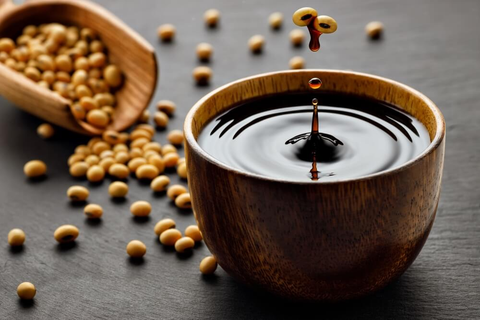
Shoyu is a term that refers to Japanese-style soy sauce. To fully understand why shoyu is different from soy sauces from other countries, such as China and Indonesia, you need to know its brewing process. The process of making common shoyu products involves fermenting soybeans with wheat, salt, and water. The soybeans are mixed with koji and other ingredients and allowed to ferment for several months. The next step involves filtering the mixture to extract raw shoyu.
Japanese-style soy sauce is different from conventional soy sauces, particularly because of the ingredients it contains. While others could use 10 to 12 ingredients, shoyu only requires 4 ingredients. The most popular shoyu in the world is Kikkoman soy sauce. It also makes our curated list of the best soy sauces of 2024. Shoyu can be used as a dipping sauce for sushi, sashimi, and meat-based Japanese food. It’s also the base for noodle soup broths and a key ingredient in teriyaki and kabayaki sauces. As a reliable substitute for salt, shoyu is a staple in Japanese kitchens.
Ponzu: Citrus-Infused Soy Sauce for a Tangy Twist

This iconic citrus-based Japanese sauce is one of the best things to come out of the country’s traditional cooking. The condiment brings its tangy flavors to nearly any meal you can think of. You may use ponzu sauce as a dip for noodles, gyoza dumplings, salads, and grilled dishes. You may also use it as a marinade for meat and veggies or a topping for grilled seafood. Ponzu is made of citrus juice, dashi, sugar, soy sauce, and mirin. The citrus-infused sauce complements dishes with a balance of tartness and umami. There are three types of citrus fruits used to make the juice. At least two of them are paired to create pomzu’s citrus juice. Yuzu is the most popular citrus fruit. It’s yellow and produces a tart but fragrant taste. Other common citrus fruits are kabuso, sudachi, yukou, and daidai. It’s not uncommon to find ponzu sauce made from lemon or lime juice. To learn more about ponzu sauce, read our article on the citrus-infused condiment.
Japanese Curry: A Comforting Blend of Spices and Flavors

Japanese curry first appeared in Japan around the 19th century. Since then, it has warmed its way into the hearts of millions of Japanese people, making its way into Japanese supermarkets and restaurants. Japanese curry has a thick and stew-like consistency. It’s made from proteins, potatoes, carrots, grated apple pieces, and onions. The most common proteins used in the curry are chicken, beef, and pork. Japanese curry is served in three main forms: curry rice, curry bread, and curry udon. Other less common forms include Japanese curry roux cubes (or simply curry cube) and curry powder.
The easiest way to differentiate Japanese curry from other curries like Thai or Indian is the consistency, which is thicker than most of the others. It also has a sweeter and more savory flavor than the rest. In fact, Japanese curry sauce is more like a stew, with the primary focus on flavor rather than spice. As a result, children can enjoy Japanese curry because it is less spicy. The use of short-grain rice, which soaks up the liquid, is another major differentiating factor for Japanese curry. Read our guide to Golden Curry and find out about Japan’s favorite delicious curry brand and how to use it in the kitchen.
Wasabi: The Fiery Green Condiment
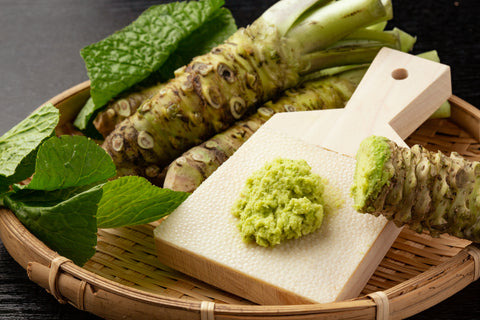
You may have come across this spicy green condiment in a sushi restaurant, even if you never lived in Japan. Such is the popularity of wasabi, a spicy green paste that tastes like fading heat and enhances the flavors of any dish it’s served with, especially sushi and sashimi. Wasabi comes from a Japanese horseradish plant in the family Brassicaceae. The rhizomes of these plants are ground to form the paste. The Wasabia japonica plant is quite rare because it requires moving water to grow, which is not a common agricultural facility. The plant also dies quite easily. Because of this scarcity, real wasabi can be expensive. To be able to meet demands, most restaurants and stores sell imitation or fake wasabi, a mixture of powdered horseradish and artificial green coloring. You can spot fake wasabi by looking at the consistency, which tends to be pasty and thick, unlike the grainy texture of real wasabi.
Nori: The Seaweed Wrap with Nutritional Benefits

This is yet another Japanese ingredient you may have come across if you ate sushi anywhere in the world. Nori is a dried seaweed sheet made from a kind of red algae known as Porphyra. Its reddish brown color upon harvest turns to a dark green hue when dried. Nori has a sweet and salty taste, making it the perfect source of umami. This edible seaweed can be used to wrap sushi and onigiri (Japanese rice balls), as an ingredient in senbei (rice crackers), or as a garnish for soups, noodles, and rice. As a staple ingredient in Japan, nori has a lot to offer in terms of health benefits. Nori is a rich source of iodine and tyrosine, which are essential nutrients for thyroid health. It can supply ten times more calcium than milk, along with zinc, copper, potassium, vitamins (A, B, C, D, E, and K), phosphorus, and magnesium. All of its nutritional value translates to better gut health, lower blood sugar levels, improved heart health, and a reduction in cancer risk.
Tempura Batter: The Secret to Crispy Delights

Your Japanese pantry is incomplete without the batter used to make tempura dishes. These meals consist of coating seafood and vegetables in a distinctive batter known as tempura batter. This batter is light and airy, providing a crispy coating when fried. Tempura batter is made from flour, eggs, and cold water. The recipe appears simple enough, but you need to use an ideal process if you want crispy results that can coat a variety of ingredients. We recently published a post on the art of mastering tempura batter, which will provide all the insights you need to make the batter from scratch. After making the batter, use it to coat any ingredient of your choice, including fish, shrimp, egg plants, carrots, chicken, sweet potatoes, green beans, and mushrooms. Next, deep-fry the coated ingredients until you reach the perfect level of light and crispy. You can enjoy your tempura dish right away with dipping sauce.
Furikake: The Flavorful Sprinkle That Enhances Any Dish

You can’t have rice in a Japanese pantry without furikake seasoning. The two are familiar companions in many kitchens in Japan. Furikake is a dry rice seasoning made from seaweed, sesame seeds, and fish. The salty and savory flavors of furikake bring life to otherwise bland-tasting plain rice. Its dryness and sesame seed content create a crunchy nuttiness that many people love. Furikake is also highly nutritious and versatile, finding usage in a variety of Japanese and global cuisines. Although furikake was invented to be sprinkled over boiled or fried rice, it can be added to salads and noodles. There are several varieties of furikake, based on ingredients, including the following:
-
Nori tama furikake: with egg powder granules.
-
Soy sauce furikake: contains dried soy sauce with sugar, salt, and sake.
-
Salmon furikake: contains dried salmon flakes.
-
Shiso furikake: made with dried shiso leaves.
Other common ingredients used to make furikake are poppy seeds, wasabi, nori, and bonito flakes. For more details on furikake, including its key ingredients, health benefits, and culinary usage, read our furikake guide.
Konjac: A Versatile and Healthy Ingredient

Konjac, konjak, or konnyaku is an Asian root vegetable that was originally native to China but has become popular in Japan since the 6th century. Konjac is used as an ingredient for making ito konnyaku (shirataki noodles), oden, sukiyaki, vegan gelatinous dishes, and more. Konjac’s main value is in its texture and health benefits. It has a fibrous and chewy mouthfeel. As a rich source of a dietary fiber called glucomannan, konjac helps to reduce constipation, improve weight loss, and enhance skin health.
Konjac can be made into jelly, powder, and flour, which are used for making a variety of desserts and puddings. However, it offers a healthier option and is vital for people with dietary restrictions. There’s a lot to unpack about konjac’s versatility and health benefits. We do all of that and more in our dedicated post on konjac as an Asian superfood. Feel free to read it!
Mastering Japanese Ingredients for Authentic Flavors
You now have all the essential Japanese ingredients you need to fill your cooking with the signature tastes of traditional Asian cuisine. By incorporating these ingredients, you’ll not only enhance the flavors of your dishes but also their authenticity. Below are some of the traditional Japanese recipes you can make today using the ingredients we recommended in this post:
-
Sukiyaki: Make the Japanese hot pot dish with beef, vegetables, sweet shoyu, and konjac.
-
Tempura: Choose any seafood or vegetables of your choice and deep-fry them with a delicious coating of tempura batter.
-
Ramen: Enjoy ramen noodles with a miso-based broth, furikake seasoning, and nori toppings.
-
Onigiri: make simple rice balls wrapped in nori.
-
Takoyaki: Use tempura batter to create scraps and add to the diced octopus, green onions, and fresh ginger of takoyaki.
-
Miso soup: Mix dashi stock and miso paste to create simple yet highly flavorful miso soup.
While shopping for these staple ingredients, be sure to browse through Bokksu Market for quality ingredients sourced directly from Japan.
Author Bio


